Eke out a living from farming in remotest Scotland
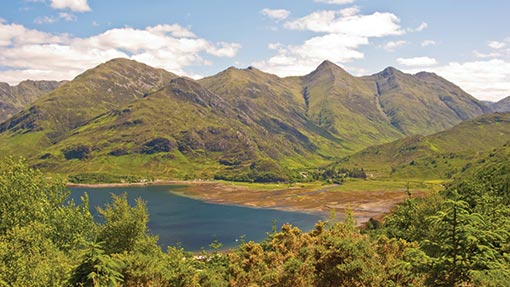 DO NOT RE-USE
DO NOT RE-USE Purple hillsides and sharp mountain ranges attract millions of tourists to the Highlands and Islands every year and they leave with strong images of heather, sheep, crofts and wild, windswept landscapes.
The remoteness of Scotland’s far north and west is alluring and beautiful; it’s an idyllic place on a sunny summer’s day. But the farmers and crofters who work on this western fringe of Europe don’t live on scenery, and the constraints imposed by the climate, remoteness and terrain are not lessened with scientific advancements or new technology. Broadband is still a distant dream in many places.
The productive capacity of the land will always be the big dictator, and the majority of it here is marginal. There’s rock, peat, wetland, steep slopes, flower-strewn machair on the edge of the Atlantic and vast areas that are of high conservation value but of little use for anything but birds.
Much of it is barely able to grow grass, never mind crops, so it’s little wonder that the less favoured areas classification applies to 85% of Scotland, a sharp contrast to only 15% of England. And while it has never been easy to farm on the edge, recent land abandonment, soaring transport costs and a lack of new entrants is making it ever harder for those who have stayed the course.
Burgeoning numbers of geese on many islands and the success of reintroduced sea eagles that prey on hill lambs are new, controversial challenges and the irony that these birds and many endangered waders are successful here largely because of agricultural activity is not lost on farmers and crofters.
And there would be very little farming in these places without subsidy. A fundamental plank of support comes in the shape of the Less Favoured Areas Support Scheme (LFASS). These non-competitive payments are designed to keep people farming in fragile areas and are a core element of the Scottish Rural Development Programme (SRDP). They’re worth £65m to 11,500 farmers and crofters and for some producers the annual LFASS cheque amounts to more than their single farm payment.
While the short-term future of LFASS is secure, there’s uncertainty over the shape of a new regime that’s required to evolve into an areas of natural constraint support scheme from 2017. NFU Scotland argues that getting the detail of this “lifeline” funding right will be every bit as important as the introduction of new area-based direct support – and just as challenging.
Commission officials from DG Agri have been invited to come and see for themselves the extreme variability of Scottish agriculture and the specific challenges faced by farmers.
It’s hard here, but most of the farmers and crofters are from families that have worked this land for three or more generations; they know the limitations and how to cope. Some producers, such as Sandy Murray, who crofts two-and-a-half hours north of Inverness, are able to adapt and capitalise on tourism opportunities. But only a few, such as sheep farmer Lachlan McLean on Mull, have a successor who’s prepared to come back and continue the tradition.
Young blood badly needed
Sandy Murray, Strath Halladale, Sutherland
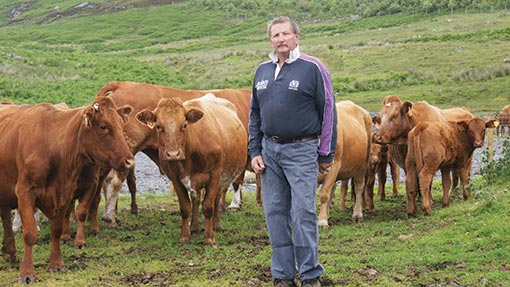
The average age of the men working the land in the crofting township of Strath Halladale is 77. Sandy Murray isn’t that old yet, but he has spent all his working life in the remote glen that was brutally emptied of people and replaced with sheep during the Highland Clearances of the early 1800s.
Sandy has 260ha of enclosed ground and 1,000ha of shares in the common grazings. But it’s all poor peat land, protected as sites of special scientific interest, special areas of conservation and “every other designation you can think of”.
The quality of the land and remoteness means that to survive here as a crofter you have to be creative. Today, Sandy runs 300 North Country Cheviot ewes and 20 cross cows but he has also capitalised on the tourism industry by converting the old meal mill his great-grandfather built in 1856 into a bunkhouse. He also runs a clay pigeon ground, laser combat games and he has just built a 20kWh turbine to supply his own electricity and feed into the grid.
“You could never survive here on crofting alone,” he says. “Over the years I’ve grown Christmas trees, done fencing contracting, sheep shearing, milked cows and sold the milk across the strath, and at one time we ran the post office.
“The problem in places like this is the lack of young people prepared to commit to the crofting lifestyle. The youngest crofter here is 40 and I’m at retiring age myself now with no one prepared to take on this lifestyle.
Milk on Mull
Sandy Pirie, Machrihanish Farm, Kintyre
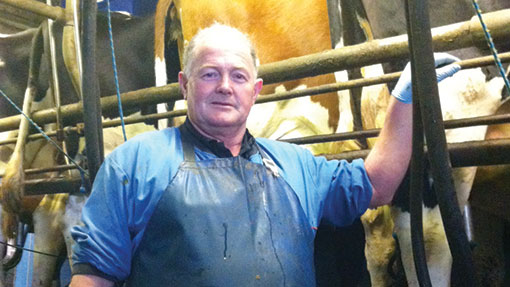
When Paul McCartney made his Mull of Kintyre video back in 1977 there were well over 100 milk producers on the long, lush peninsula. Today there are only 39 and the biggest worry for dairy farmers such as Sandy Pirie is the long-term outlook for their specialist sector.
Milk producers here have only one customer, and while First Milk has given them a commitment that the future of the Kintyre Creamery is secure, they know that its viability is dependent on milk production staying stable or growing. Their uneasiness inevitably grows every time a farmer exits.
Sandy milks 160 cows on 68 flat, fertile hectares. It’s green land near the village of Machrihanish and he readily admits that he farms in an idyllic place. The remoteness is the killer, and that’s why Kintyre dairy farmers qualify for less favoured areas allowance unlike any other mainland milk producers.
“Our costs of production are high. It costs £130/t to get straw delivered here and you can add an extra £30/t to everything you bring in,” he explains. “And the creamery faces the same overheads, which makes its cheese expensive to produce and market. It is working hard to build up exports in places such as China to secure a long-term future for us all.”
No room for vertigo when working the Five Sisters
Dolan MacMillan, Achnagart, Kintail
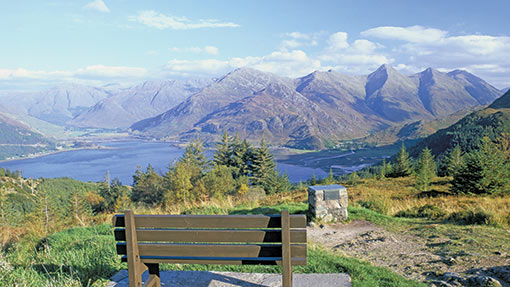
You need a head for heights, extreme fitness, a steady nerve and skilled sheepdogs to farm the mountain range known as the Five Sisters of Kintail.
Dolan MacMillan has grazed sheep on the 607ha of vertical rock, scree, heather and rough grass otherwise known as Achnagart Farm for more than 40 years. A long, sharp mountain ridge that rises to nearly 4,000ft and narrows in places to just 24in or so wide is his “march” or boundary. The terrain makes gathering the flock of South Country Cheviots a risky operation, even in good weather.
“You find yourself taking short cuts and following goat or sheep tracks, but sometimes you get in to places that are a bit awkward,” he admits.
“My toe once caught a sharp stone up on the ridge, my stick went flying over the edge and I found myself hanging by my boot over a drop of 500ft or more. I managed to get a grip and push myself back up – but I never saw my stick again.”
The land is owned by the National Trust for Scotland, which once sent a delegation to discuss a rent increase. They stood outside his modest farmhouse – which still relies on generators for electricity – until one puzzled official asked exactly where the farm was.
“I just pointed up at the hills,” says Dolan. “They looked in disbelief until one of them finally said the trust should be paying me to farm it rather than the other way around. That was the end of any discussion about a rent rise.”
The mountains rise to nearly 4,000ft in some spots.
Wandering sheep pose problems
Lachlan McLean, Calachaig, Gruline, Isle of Mull
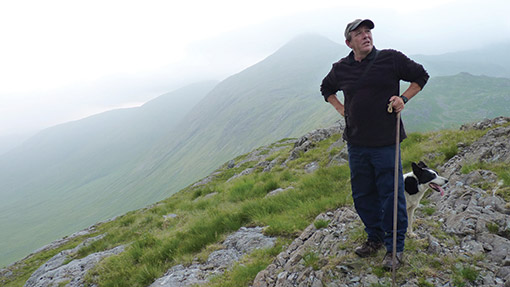
It takes six men and their dogs several days to gather 1,800 sheep across the 4,046 hill acres of Lachlan McLean’s extensive, high hill farms. And despite their best efforts, he says it’s “almost impossible” to have a 100% gather, which makes compliance with Europe’s EID rules a nightmare.
“Finding people who are able and prepared to gather sheep is becoming increasingly difficult. And two big sheep units that neighbour us have sold up, so there’s no stock on the borders and the open marches mean our sheep can – and do – wander for miles. It’s a sorry story of abandonment that’s repeated across the north west and islands.”
Lachlan’s land stretches from sea level to more than 3,000ft and includes the mountain, Ben More, which is a magnet for hill walkers. The tourists don’t pose a problem because they stay on recognised routes but Mull’s other great attraction – the growing population of sea eagles – has had a negative impact on his sheep enterprise.
“There are 22 nesting pairs on the island plus the immature birds, and we have six or seven pairs on or around our land,” he says. “It’s very difficult to put a figure on how many animals we’ve lost but I’ve seen them attacking lambs, I’ve found lambs with talon marks and I’ve had many reports from bird watchers who have seen the sea eagles attacking my stock. I probably lose at least 20 lambs to the eagles every year.”
Lachlan’s son has just decided to join the farm business after gaining his ecological science degree. “I’m delighted he wants to come home but returns have been variable and it’s difficult to plan ahead,” he says.
